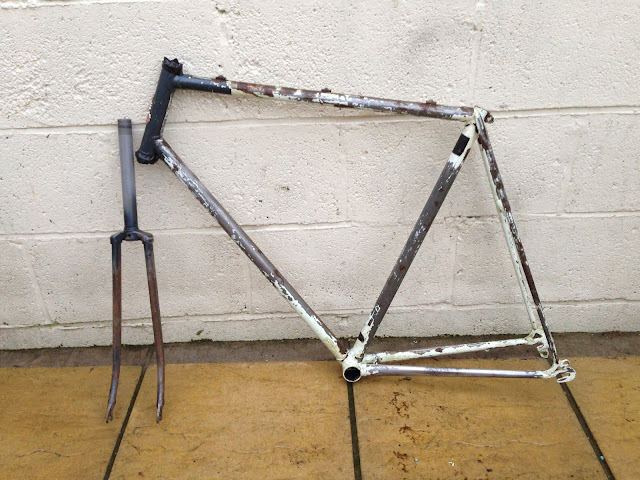So where have I been? Apologies for those waiting for the
next post on the overhaul but as the post title suggests, it's been a very busy
month.
Firstly, I have joined a new local cycling club which has
taken a lot of time and attention away from the project. Then when using what
little spare time I had to continue the blog my PC decided to malfunction,
therefore leaving me with some technical difficulties for a while. On a more
positive note, whilst hunting online for parts and components, I struck what is
possibly the best luck for the bike situation. I found a barn find in my local
area, a dry stored Raleigh Equipe! Originally, as the bike was described as an
"OK condition" and "in need of a full service" I was going
to use this bike to break down for wheels and some other components. However,
upon collecting the bike it was pretty much next to perfect. The frame was %100
original and virtually rust free with perfect decals and all mechanics were
brilliant. Because of this I had to come to a decision so decided to sensibly keep the
bike as it is and give it the full service to then add to the collection. I
will add photos later along with all components.
Now, wondering where does this leave the original project?
I
am still going to complete the restoration of course and the bike frame has currently
been stripped ready for paint. I am going to restore the bike but try not to
focus fully on its originality as I now have a fully original Equipe. I have
bought a replacement axle for the front wheel hub, I am aware that the
appearance of the rim is tatty however I am after the functionality until I
find a suitable replacement. On a humorous note, I discovered that the front
and back brakes are actually original! The rear is Weinmann and the front was
Raleigh made. I found this from research online and comparing to the barn find
Raleigh.
Here is the frames current condtion from the continuing restoration. It has been partically stripped with unbelievable coats of stripper and has proven to be quite the task.
Finally, my next post will be the situation of the front wheel.
I must thank the patience of anyone following the posts and
understanding that sometimes we cannot predict the future ... good or bad.








































